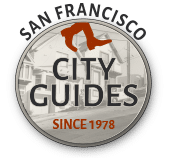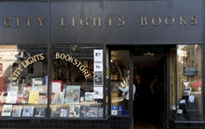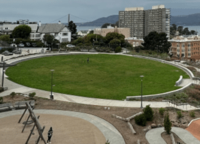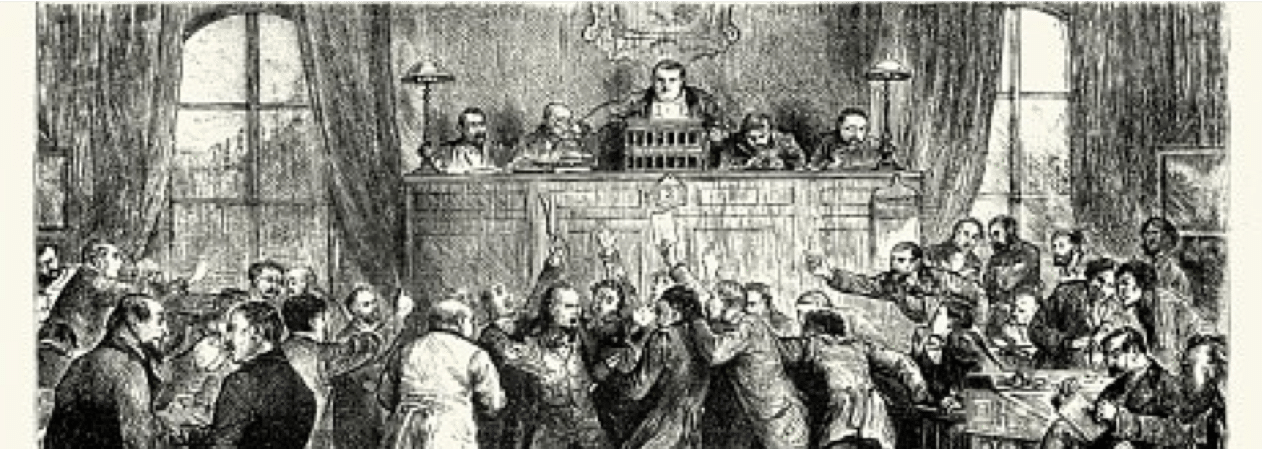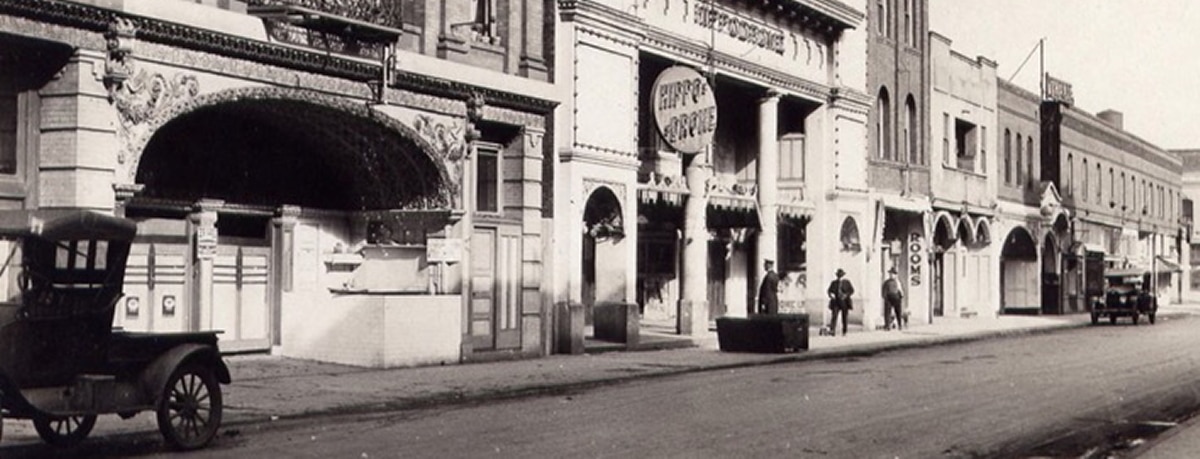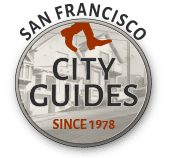Find Your Tour
All Offered Tours Are Listed Below - Select a Topic to Filter List
- Architectural/Art
- Essential San Francisco
- Golden Gate Park
- Historic/Pioneer
- Landmarks
- Music
- Natural History
- Neighborhood
- Online
- Stairways/Views
- Uniquely SF
All Tours
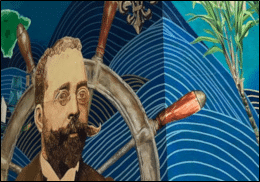
1840s San Francisco and the Astonishing Legacy of America’s “First Black Millionaire”
How did he do it? A biracial sea captain named William Leidesdorff played a central role in the American conquest of San Francisco, created multiple essential institutions, and amassed one of the most enormous fortunes in California… all while passing as white. Revered by his neighbors, many of whom openly despised the race he kept secret, Leidesdorff became America’s “First Black Millionaire” while still in his thirties. Come discover San Francisco in its earliest days and learn about this fascinating individual.

1850's San Francisco: Paris Of The Pacific
Everyone in France heard the rumors. Or saw the news reports "of gold mines...fabulous riches awaiting only the hands of miners to be picked up." Some packed their bags and set off for California. These French left their mark on the culture of the booming city. The French influenced society, especially in food and fashion. Without them, it's hard to imagine San Francisco becoming our sophisticated, cosmopolitan metropolis.

You are jolted awake in the morning of April 18, 1906 to a horrific scene. The San Andreas Fault has unleashed a shockwave felt from Los Angeles to Oregon, with the epicenter just off the coast of San Francisco. As the ground convulses, buildings disintegrate and fires are ignited. Your home, the capital of the West Coast, has been reduced to rubble in minutes: 28,000 buildings destroyed, 3,000 dead and more than 200,000 homeless. What followed that disaster, though, was one of the greatest stories of resilience in history

A Touch of Glass: Glass in San Francisco's Commercial Architecture
Some of the best examples of modern San Franciscan architecture involve a commonly overlooked design element: glass. It wasn't always that way. Make do, plain-front buildings sprang up during the frenzied years of the Gold Rush and gingerbread-covered Victorians were built in the decades that followed. But in 1918 San Franciscans were awe struck when famed architect Willis Polk unveiled his elegant Hallidie Building. Glass-shrouded buildings have taken over the skyline ever since, from the sleek skin of Financial District skyscrapers to the ornate ceilings of a Union Square landmark.

Alamo Square and its Painted Ladies
While standing in Alamo Square park across from the iconic Painted Ladies, famously known as Post-card row, visitors will see the incredible views of the San Francisco skyline. Beyond the Painted ladies, this official Historic District Neighborhood is home to countless other examples of Victorian architecture; including, Italianate, San Francisco Stick and of course the elegant Queen Anne homes. It’s a historic district that's more than meets the eye—come along on a journey through time.
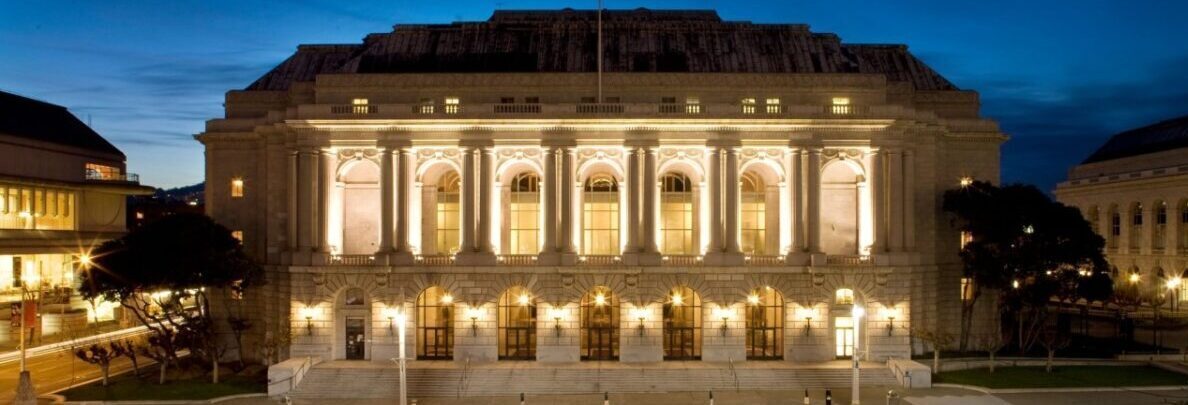
Applause: A history of music and dance in SF
Once staid and seedy, and scarred by empty lots, this area is now the hub of SF’s performing arts. In just 4 blocks there are over 15 venues with more than 11,000 seats! SF is famous for being the birthplace of flower-power rock. But it is also home to the nation’s oldest professional ballet company, is the setting for world class jazz festivals, and has a venerable opera company and a multi-Grammy winning symphony -- all with homes located here. Hear SF’s unique history of these performing arts and learn about the mix of classical to contemporary architectural styles showcasing the area’s changes. No longer staid nor seedy, the SF Performing Arts Hub is where it is happening.

Architectural Gems South of Market
Join us for a captivating stroll through one of our most intriguing and often overlooked neighborhoods. Delve into 150 years of urban evolution, and an array of architectural styles, from Victorian Gothic to 21stc Contemporary. See the juxtaposition of historic landmarks with modern skyscrapers, each witnessing the city's past and present. Learn about transformation through massive redevelopment projects, while discovering protected hidden gems. Stunning open spaces offer panoramic views. This flat, leisurely walk shows a rich tapestry of architectural, socio-economic and cultural history. Explore the soul of the city, here, one step at a time.

After the 1906 earthquake San Francisco was back to square one. If it wanted to remain the major American city of the West, it wouldn’t just need to rebuild — it needed to transcend what had been done before. Over the next century, luminous designers from Chicago and New York would bring their experiences working with new materials set at record heights to innovate the local blueprint. Architects like George Kelham, Willis Polk, William Pereira, and SOM would paint the skyline out of thin air.

San Francisco neighborhoods constantly change but still retain much of the look and character of past decades. The Marina District is no exception. Largely developed in the 1920s and 1930s, a period that coincided with a popular design style now known as “Art Deco” which fused art and technology with a jazz age lifestyle. Deliberately intended to be modern the style was influenced by a wide variety of sources, which can be seen on many of the Marina’s apartments and commercial buildings, while surrounded by a residential district of “Mediterranean Revival” houses and flats.

Billionaires' Row: Outer Broadway Architecture
After the 1906 earthquake pummeled their Nob Hill enclaves, the wealthy titans of San Francisco became temporary nomads. With the landscape wiped clean, where in the city was the best place to put down roots? The best view of the Bay was located on the hills of Pacific Heights, where real estate was essentially up for grabs. They parked their old money in mammoth mansions and created one of the most expensive zip codes in the world.

Cable Cars: Halfway to the Stars
Since Andrew Hallidie introduced Cable Cars in 1873, San Francisco’s cable car lines changed the landscape of San Francisco, making hilly neighborhoods accessible. The cable cars survived the 1906 earthquake and fire as well as outlasting political attempts to modernize transportation. Today the cable cars have gained worldwide attention to become what is seen today as a San Francisco icon.

City Hall and the Civic Center
After the original City Hall perished in the 1906 earthquake, San Francisco had a chance to think bigger the second time around. Civic Center is a campus that houses some of the city’s most important governmental and cultural institutions. Minimal walking — but maximum awe.
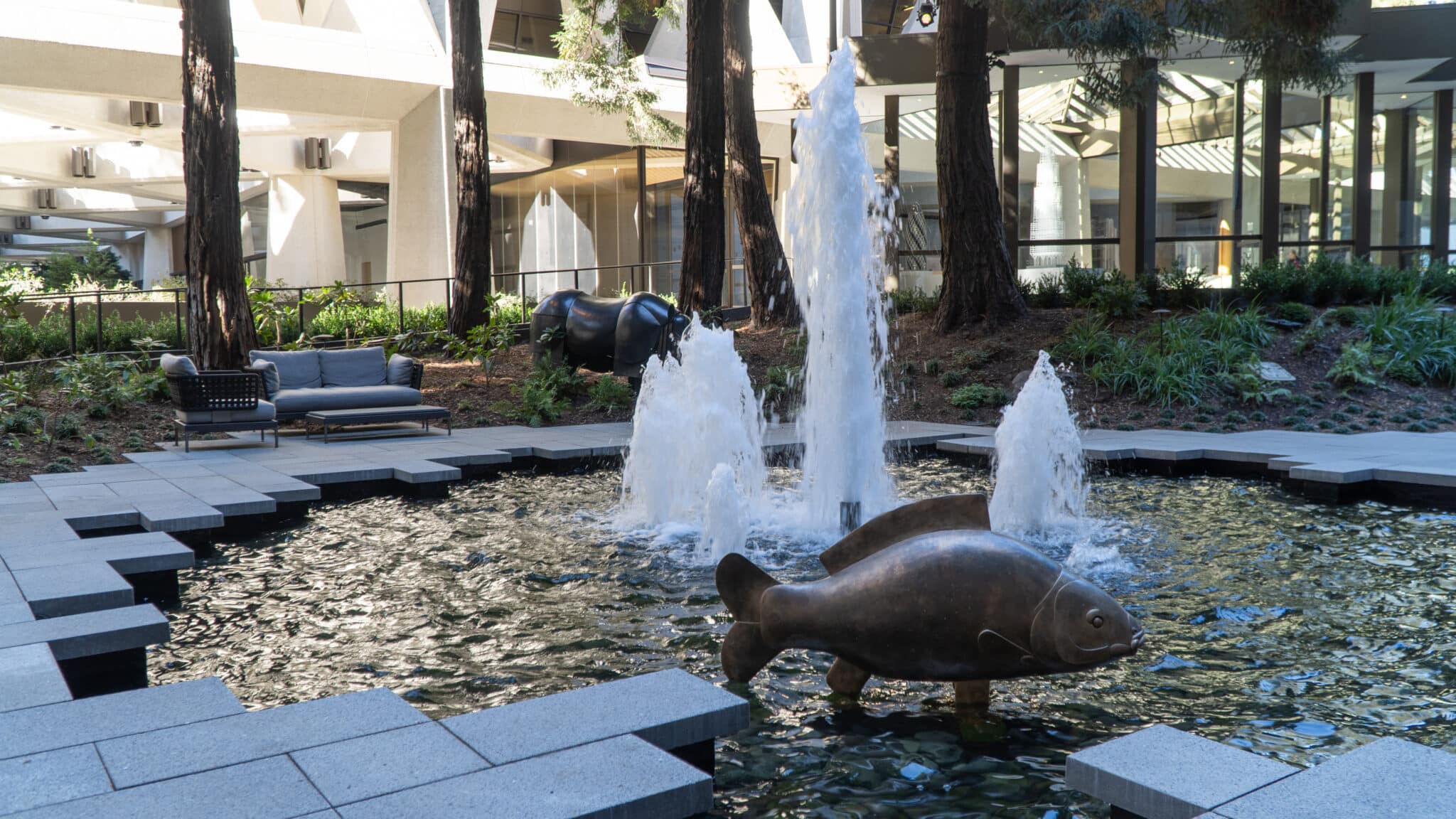
The 1985 Downtown Plan was one of the most important piece of red tape in San Francisco history. With accelerating downtown development, city officials laid down some ground rules: If you’re going to build here, you’re going to have to pay a little extra to cover the necessary infrastructure improvements. Oh — and you have to devote a portion of your project to a publicly accessible open space. Thus, Privately-Owned Public Open Spaces (POPOS) were born.

Explore the Corona Heights neighborhood, directly adjacent to the Castro.The tour visits the Corona Heights Hill, Buena Vista Park, Mount Olympus, and takes in some of the most spectacular views of San Francisco. You will learn about the history, architecture and the underlying geology of the neighborhood, and the people and events that shaped the hill.

Perk up your Sunday morning with the bell ringing at the oldest Orthodox Christian parish in America. Spared destruction from the 1906 disaster, Cow Hollow contains structures from nearly every decade since the 1860s. This tour illustrates the transformation of the district from a rural suburb to a full-fledged city neighborhood.

Crissy Field and Climate Change
This tour has a new name. See: Transformation of Crissy Field.

Dogpatch East - Past, Present, and Future Industries
Come learn about this fascinating designated Historic District. Witness Potrero Points transformation from the Gold Rush through the height of World War II and learn how it weathered a major downturn to emerge as one of the city's fastest-growing areas. See new developments along Pier 70 coming to life and learn about the exciting future of the city’s southern waterfront.

Dogpatch West - Dutchman's Flat to Dogpatch
Come visit one of San Francisco's can't-miss Historic Districts. Learn how waves of boom and bust transformed the working-class neighborhood of Dutchman's Flat into modern-day Dogpatch. See a blend of historic buildings and modern developments while learning about some of the people who left their mark on San Francisco.

Even though the Art Deco movement was a French creation, it found a dedicated American evangelist in San Francisco architect Timothy Pflueger. His designs, along with those of other architects, invoke the jazzy buoyancy of the Roaring 1920s and San Francisco’s thriving economy throughout the period. We’ll take a comprehensive tour of all the Art Deco masterpieces in San Francisco’s downtown. Soak up San Francisco of the 1920s through these elegant, timeless buildings.
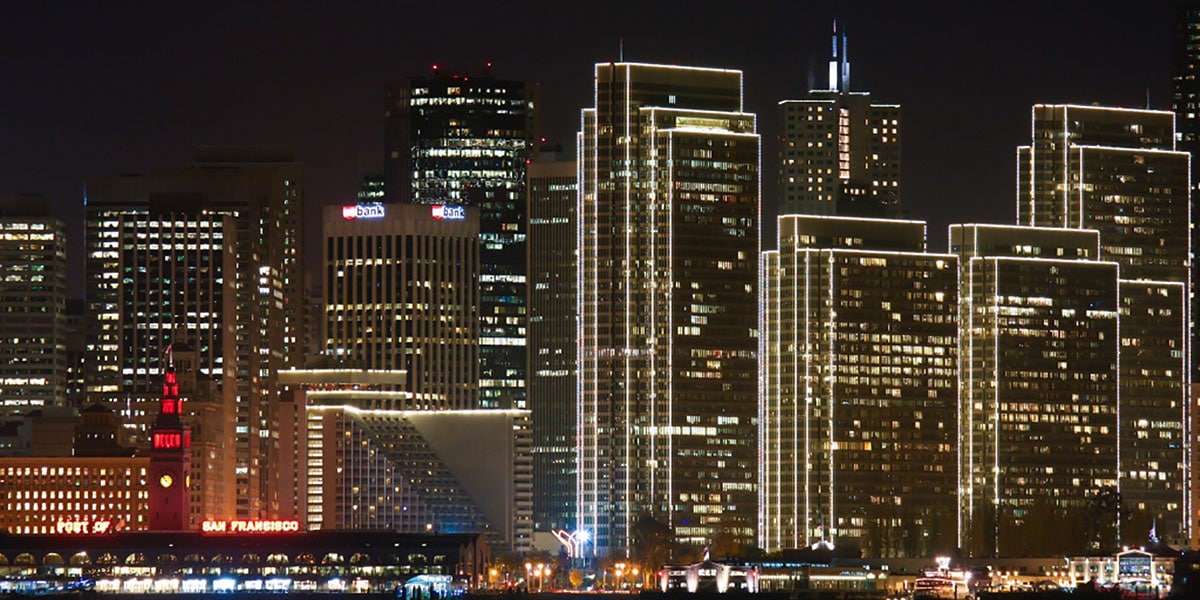
Embarcadero Skyway and Art Tour
In desperate need of a makeover, mid-century Embarcadero was transformed into an impressive business district populated with hidden treasures, including the world-class Embarcadero Center Art Collection, curated by the Rockefeller family. Many of the sculptures in the collection reflect themes of transformation, change, rebirth, and new beginnings—powerfully echoing the waterfront’s own journey from a tidal cove to a bustling port, and now, into a modern urban space. Join us to explore this revitalized shoreline, where modern art and architecture reinforce the story of the city’s evolution!

Express - Architecture Downtown - Deeper Dives
This tour will quickly review the development of downtown San Francisco following the earthquake and then take a deeper dive into the history, architecture, and architects of one dimension of the Union Square area. Topics will vary with each tour, some of the initial topics to be covered are: Department Stores, San Francisco between the Wars (First and Second), and High Heels and High Rises (the story of the role of women in the new service economy).

One of the remotest places on earth was transformed overnight into the center of world attention as hundreds of thousands abandoned home and family to travel for months by sea to San Francisco from every continent. When the 49ers finally arrived, they found an instant city like no other...where everyone had to strike deals daily to survive. Get a brief introduction to Gold Rush San Francisco as we glimpse a block and a half of saved buildings, and a few surviving artifacts. Hear descriptive nuggets from first-hand observers, and view illustrations including some of the earliest photographs. Learn about the California Code, and why so many “saw the elephant” in this first era of globalization.

Experience the hotel of presidents, dignitaries, king & queens , rock-stars and the rich and famous. Visit a beautiful hidden garden, listen for the Fairmont bees, and you will leave your heart in San Francisco at the breathtaking Fairmont Hotel. Stroll through this Italian Renaissance palazzo masterpiece. On our tour you gain exclusive access to several beautiful and surprising venues and rooms that are not always open to the public. This tour is by reservation only

For much of the early 20th century, nobody traversed the Bay without going through the Ferry Building. At its peak in the 1930s, it was the second-busiest travel hub in the world, shuttling more than 50,000 people both to and from San Francisco each day. When the city built its famous bridges, ferry travel dropped dramatically, and the building suffered for decades. In the ‘90s the Ferry Building transformed into a world-class food market focusing on local artisan creations. Today, it remains an iconic landmark of the waterfront (and a popular establishing shot for movies set in San Francisco). Join us on a wondrous trip through the centerpiece of the shoreline.

Fisherman's Wharf: A Hidden History
It may not look like it now, but underneath the sleek, commercial facade of today’s redeveloped Fisherman’s Wharf, hundreds of Italian immigrants built an entire industry on the backs of Dungeness crab. Not everything on this tour happens on the water. We'll look at Ghirardelli Square, once the factory of San Francisco's most beloved chocolatier. Passing the Hyde Street Cable Car Turnaround we discuss San Francisco's cable cars and we'll explain the stories of many of the historic ships anchored at the Hyde Street Pier. Discover a new side of the Wharf, featuring stories of the Bay that locals themselves don't know.

Once known as the “Gateway to the Pacific,” Fort Mason has been the protector of a growing metropolis, a site where America’s massive military embarked for the fight against the Axis powers, a community for earthquake refugees, a home for artists and the playground of tech bros. Since it was constructed, Fort Mason has transformed along with San Francisco, each time remaking itself into a dynamic headquarters for a changing city. Today, visitors are more likely to visit for its use as a vibrant arts hub with performance spaces and galleries, or the regular food truck gatherings and farmers’ markets.

here’s a small rocky outcrop jutting into the bay that has been a vital part of San Francisco’s history, from its very beginning right up to today. Bring your camera to capture stunning views of the Golden Gate Bridge, Alcatraz, the Bay Bridge, Aquatic Park and the Hyde Street Pier. You’ll see historic buildings, a hidden oasis, outsized art and the wild parrots of Telegraph Hill.

Gardens in the Sky: Salesforce Transit Center and Rooftop Park
Visit a destination that is a hub for San Francisco and its environs -- and one of the most elegant gathering spaces in the region. Glide on a gondola to a rooftop retreat of trees and plants from around the world. The transit center and its gardens will have you marveling at trees, towers, and tales that recall its past as one of the oldest neighborhoods in San Francisco -- and boldly asserts the city's promise and potential for its future.

"Gold! Gold from the American River!", shouted San Francisco businessman Sam Brannan, as he ran down Montgomery Street in May,1848, waving a jar filled with gold over his head, sparking the Gold Rush. As word spread rapidly around the world, the tiny village of San Francisco, tucked amidst massive sand dunes by the Bay, and frequented by grizzly bears and mountain lions, was transformed virtually overnight into a booming instant city.

What more is there to say? It’s an international symbol of San Francisco, a mind-blowing feat of engineering, and one of the most-photographed places in the entire world. The iconic Golden Gate Bridge has captivated locals and tourists alike since it opened in 1937. It was the world’s longest and tallest suspension bridge at its opening, and almost a century later, remains one of the most impressive structures ever built by humans.

With so many hills to explore in San Francisco, Golden Gate Heights often gets overlooked. Nestled in between Twin Peaks and the Sunset District on the westernmost side of the peninsula, it’s a hidden treasure enjoyed by the few in the know. Note: This is a mildly strenuous walk. Sturdy shoes are recommended. Tour will be canceled in case of rain

Golden Gate Park: American History
Memories in Trees, Stone & BronzeJoin us on a fascinating stroll in one of America's most magnificent urban parks, where you will hear the incredible tale of the Park's improbable creation from a sea of desolate sand dunes. Learn how this city of immigrants to a new state from across the country and across the world chose to celebrate and connect to the history of the US. You will hear amazing and little-known stories of controversy and violence behind the monuments and memorials commemorating America's turbulent and inspiring past.

Golden Gate Park: East End,
Creating San Francisco's Great Urban ParkIt was the 1860s, and everyone had heard about New York City’s Central Park — a spacious plot of green that contrasted sharply with the metallic landscape beyond. To recreate such a space in San Francisco, city officials looked west and by the turn of the century, Golden Gate Park had developed into an enormous playground for a recreation-starved city. Breathe deep and enjoy a natural oasis on the Pacific.

Golden Gate Park: Mid Park Ramble
Hidden Gems, Rarely VisitedDiscover fascinating, but seldom-visited features in the Park by hiking from the Music Concourse around Stow Lake and to the observatory ruins atop the second highest sand dune in San Francisco. Tour the Prayer Book Cross commemorating a little-known 16th century event and Lloyd Lake's Portals of the Past, a haunting reminder of the tragedy of 1906.

Golden Gate Park: West End
Breakers, Old Trains & Windmills!At the western edge of Golden Gate Park, within sight of the Pacific Ocean, the towering Dutch Windmill welcomes walkers. Surrounded by the year-round beauty of the Queen Wilhelmina Garden, the mill bears witness to the struggles of Park Superintendents William Hammond Hall and John McLaren to transform the shifting sands of the Outside Lands into a verdant landscape.

HERstory: Women Muralists of the Mission
Murals began appearing in the Mission District in the early 1970s. It was exclusively men’s work, mainly done by Latinos drawing upon a long tradition of Mexican “muralismo.” A few women, all Latinas, defying criticism, the occasional catcall, and even their own social mores, courageously said, they too, could climb a scaffold and paint. And they did, exquisitely and uniquely with a distinctive palette. Many of the pioneers still paint, while nurturing a new generation of women muralists. Come walk with us to hear the sensational story of the women muralists of the Mission and see their dazzling work. You will be awestruck.

Historic Market Street: Path Of Gold
When surveyor Jasper O’Farrell completed his 1847 proposal for Market Street, an abnormally wide boulevard cutting diagonally through the heart of the city, it wasn’t popular. Landowning pioneers accused him of “wanton disregard” for their rights. But over time opinions changed. Come and stroll the street that unites San Francisco. Learn how Market Street has evolved with the times, always remaining relevant. Hear epic tales born on the Path, from Gold Rush stories to cable cars, vintage street cars and the construction of BART.

Inner Richmond District The Early Years: Ranches, Gate Crashers, and Japanese Gardens
The Richmond District is one of San Francisco’s largest neighborhoods, and one with a vibrant history. Once dismissively dubbed the “Outside Lands” due to its distance from the city center and vast sand dunes, the Richmond played a vital role in the development of San Francisco as a little village. It gave way to rows of pretty 1890s Victorians buttressed by the open parkland of Golden Gate Park and the Presidio. Where cars rush by on Park Presidio Boulevard, the district once welcomed 1906 Earthquake refugees and there was a small triangular block of old cable cars remodeled into studio homes.
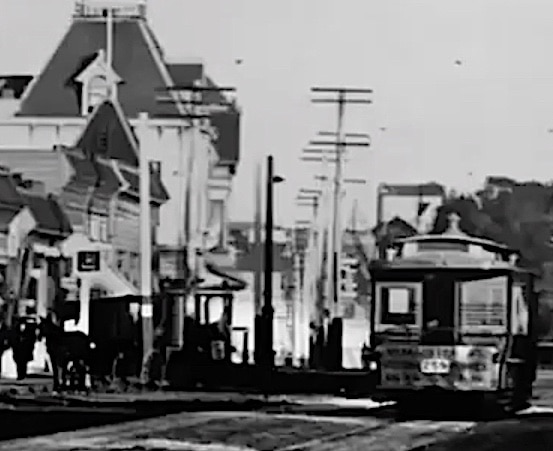
Inner Richmond District The Wild Side: Beertown, Barracks and Buffalo Bill
South of Geary Street was the Richmond's Wild Side: there were squatters and robbers’ roosts in an area that became a race track. When the race track was graded and divided into blocks awaiting housing development, instead they became campsites for American soldiers on their way to the Spanish-American War. Soon rows of Fernando Nelson houses appeared. A decade later, newly paved streets with beautiful Craftsman houses were built. Visit the part of San Francisco where Wyatt Earp once lived and a new hospital offered America's first health maintenance organization.

After the successful 1894 Midwinter Exposition San Francisco decided to keep the Japanese Village exhibit. Makoto Hagiwara was hired to be the new manager of the Garden and immediately set about expanding the Garden three-fold to its size today. An impressive variety of flora greets you as you enter a Japanese inspired wonderland of small scenes created throughout the Garden. The peace and quiet of the Garden encourages one to slow down and be mindful of the surroundings - A perfect walk for those seeking a peaceful afternoon...

Across the West Coast, there’s few ocean vistas more arresting than Land’s End — a fact millionaire Adolph Sutro was well aware of when he built the first passenger steam train to the park in 1880. He wasn’t done there: Sutro transformed the land, adding an elaborate public garden, renovating the quaint Cliff House and constructing the Sutro Baths, a massive swimming facility on the oceanfront. Come experience Adolph Sutro’s gift to San Franciscans

It’s easy to admire the Main Library of San Francisco from afar, its stately rectangular body spanning an entire block. But it’s when you get inside that the real magic appears. A dramatic skylight crowns the soaring atrium, flooding every nook and cranny with natural light. The bridges above span the spacious lightwells, delivering readers to whatever book they’re searching for. Perfect for bookworms and non-readers alike.
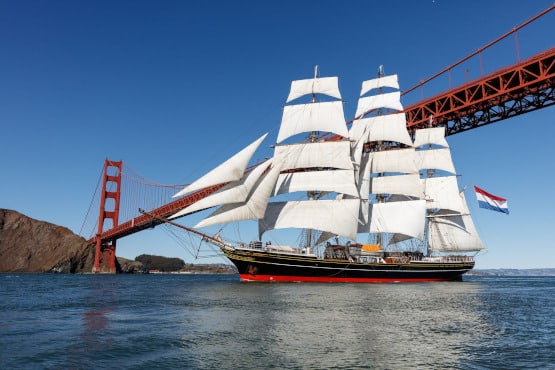
Can you imagine San Francisco without the Bay? It connects us to the world, shapes our climate, and feeds and entertains us. On this tour, we explore the saltwater lifeblood of the city. From ancient shores to today’s maritime bustle, where history and real-time drama meet, you’ll see how the Bay has powered it all. Along the way, you’ll get a front-row view of what’s unfolding on the water right now. Bring your curiosity—we’ll supply the view.

From muddy tidal estuary inhabited by the Yelamu, to a rail and shipping nerve center for the city, to what is now home to emerging biotech companies and San Francisco's newest residential district, Mission Bay offers a glimpse of the future but doesn't forget its past. From house boats to high-rises, development isn't over yet, with more buildings and housing planned.

See one of San Francisco’s oldest and most colorful neighborhoods, the Mission, where you’ll trace a history beginning with Indigenous peoples through waves of immigrants to today’s concerns of gentrification. Begin at the famous golden fire hydrant where locals successfully fought to save the area during the 1906 earthquake. Gaze at a spectacular view of SF’s skyline from gorgeous Dolores Park. Wander through a historic district, get a mini-course about Victorian styles, go down the hip Valencia Street corridor, see and understand the importance in the Mission of its murals, while learning about the area’s Indigenous peoples and the colonization by Spain and Mexico at the oldest building in San Francisco, Mission Dolores, the church of Saint Francis of Assisi.

San Francisco has no shortage of tall structures with staggering views. But there’s something different about being on top of Mount Davidson — the air is fresher, the people are friendlier, and the view you’re enjoying was one earned through your own grit. Explore the colorful history of San Francisco’s highest hill as we stroll through a beautiful nature preserve up to the 938-foot tall summit. Note: Includes hilly trails which can be windy and muddy — wear a jacket and sturdy shoes. There will not be restrooms available on the stroll.

Walk the streets where railroad barons, silver kings, and other wealthy San Franciscans built lavish mansions. Hear stories of the success and scandals of the high society men and women who lived on Nob Hill, the place that locals call Snob Hill. Experience the splendor of a world famous hotel where Tony Bennett first sang "I left my Heart in San Francisco". Visit a cathedral whose stained-glass windows honor scientists as well as saints, whose memorial chapel displays sections of the AIDS quilt, and whose labyrinth is the site of both meditative walks and candlelit yoga classes.

Noe Valley: A Village Within the City
Noe Valley is a series of delightful surprises. Much of its story is tucked away within the confines of the neighborhood. Who was Noe? What is Horner’s Addition? Why do some people call it Stroller Valley? Who were the builders that created the charming homes that line the streets? Did Andrew Carnegie live here? Sheltered from our famous San Francisco fogs by Twin Peaks, it has some of the best weather in The City. Learn how this area was transformed from a blue-collar stronghold into a delightful "Village within a City" -- Noe Valley.

Up for an adventure? Join us in the elegant Omni Hotel lobby for a surprise tour through the downtown area of San Francisco. Stops will vary — destinations could include Chinatown, Embarcadero Skyway or Gold Rush City.

Online - Land's End: Sutro Heights
Across the West Coast, there’s few ocean vistas more arresting than Land’s End — a fact millionaire Adolph Sutro was well aware of when he built the first passenger steam train to the park in 1880. He wasn’t done there: Sutro transformed the land, adding an elaborate public garden, renovating the quaint Cliff House and constructing the Sutro Baths, a massive swimming facility on the oceanfront. Come experience Adolph Sutro’s gift to San Franciscans

Online - Spreckels' Sugar Empire
Beginning in the late 1850s, Claus Spreckels arrived in San Francisco and set his sight on building his sugar empire that would later bring a tremendous amount of wealth to the Spreckels family. The reach of the Spreckels' sugar empire would reach from Hawaii to the San Francisco Bay Area and beyond. We will be focusing on Claus Spreckels and Alma de Bretteville Spreckels contributions.

Old money heirs share fences with newly minted tech billionaires in Pacific Heights, arguably one of San Francisco’s toniest and most exclusive neighborhoods. Atop a hill with majestic views, the area’s towering mansions were a manifestation of of Victorian excess and a key part of the Gold Coast’s development. After the 1906 earthquake, homeless quake refugees provided the moneyed residents a different sort of neighbor. You’re as likely to run into a celebrity resident as a diplomat visiting one of the manses-turned-consultates.

The 1915 Panama-Pacific Exhibition was a momentous occasion for the city of San Francisco. Only a decade removed from the most disastrous earthquake in the state’s history, city officials felt it was the perfect time to showcase what San Francisco had in store for the future. Architect Bernard Maybeck had a brilliant vision for its centerpiece structure: he wanted to invoke the imagery of Roman ruins, creating “a sense of sadness, modified by the feeling that beauty has a soothing influence.” Learn everything about the extravagant 1915 exhibition and the work that went into its preservation as we saunter through the Palace’s grounds.

It was the 1850s on the southern edge of town when cattle peacefully grazed the hill known as Potrero Nuevo. But bustling industry along the shoreline below the hill created a need for nearby housing. Hear how Potrero Hill was transformed and discover this secret oasis isolated from the rest of the city and blessed with sweeping views of the skyline and Bay.

Presidio: From Military Base to National Park with Tunnel Tops
From Spain, to Mexico, to the United States — The Presidio has been home to more militaries than almost any other fortress in America. When the military left lawmakers transformed the space into a National Park in 1996, and since then the Presidio has become one of the greatest (and greenest) places to explore in all of San Francisco. Join us on a walk through San Francisco’s panoramic, luscious park, with wooded areas and scenic views as far as the eye can see including the newly-created Tunnel Tops.

You’ll get breathtaking views with Russian Hill Stairways and catch your breath at stops featuring tales of iconic figures and pioneering architecture. Hidden and scenic paths await to add to the Russian Hill experience!

Russian Hill: Architecture and Culture of an Island in the City
Russian Hill is the rare neighborhood that feels both tucked-away and close-to-the-action at the same time. Hear about the Beats, bohemians, and general eccentrics who sculpted the area’s unique feel. Gaze at delightful mansions and cottages that remain distinctive even against the rest of San Francisco’s lovely buildings.

This tour has a new name. See: Gardens in the Sky: Salesforce Transit Center and Rooftop Park
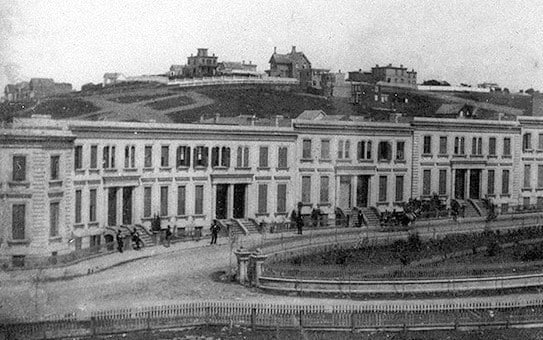
South Park: From the Gold Rush to Instagram
South Park has more continuous history than any other city block in San Francisco: From homes for Gold Rush entrepreneurs, to waves of newcomers from Japan, the Philippines, and the American South, to industry and warehousing for the West Coast's busiest port, South Park is now a tech-and-venture-capital hub. Join us on an exciting walk through time, from the Gold Rush to the first offices of Twitter and Instagram.

Telegraph Hill is one of the most beautiful, panoramic vantage points in San Francisco, offering breathtaking views of the Bay. Come and uncover Telegraph Hill’s colorful history on a mile-plus hike featuring incredible vistas and lush foliage. Explore the hidden staircases that lead to Coit Tower atop the Hill, and discover gorgeous gardens and a beautifully landscaped neighborhood of cottages dating back to the 1850s.

Transformation of Crissy Field
Looking into the prehistoric past but also into the future, this tour shows us the most beautiful and iconic views of San Francisco Bay. Join us for a lovely walk along the bay; for those seeking a longer stroll, after the tour, you can continue to the base of the Golden Gate Bridge.

Ever wondered why there are so many Victorian style houses in San Francisco with an endless variety of decoration? The answer lies in the rich and fascinating history launched primarily by the California Gold Rush in 1849 and the advent of the cable car. Walkers learn cues to recognize the different styles of homes built across 4 decades. If you are a fan of Victorian architecture, and don't mind walking a few steep hills, or just want to learn more, this tour is for you.

Discover the magic of San Francisco, a city celebrated for its stunning beauty, breathtaking vistas, and rich culture and history. This one-of-a-kind tour provides a sweeping introduction to SF, making it ideal for those who are new to the city or those seeking a broad-ranging look at what makes it unique. On this unforgettable walk, you'll explore diverse urban landscapes and visit some of San Francisco's most iconic landmarks. You’ll hear stories that bring the city alive. Topics include: Gold Rush, cable cars, food culture,1906 earthquake and fires, counterculture movements and tech innovations. The tour ends at North Beach where you’ll find an assortment of old-world cafes, vibrant neighborhood energy and “Only in San Francisco” shopping opportunities. Come experience the allure of this incredible city and see for yourself why San Francisco captures hearts!

The state of city life in the late 1800s wasn’t great. The inherent problems of having a quarter of a million humans concentrated in an urban landscape weren’t being dealt with, leaving a mess for those who called it home. To the legendary architect Daniel Burnham, it was obvious that cities should be planned and designed with the public’s health and well-being in mind leading to the City Beautiful movement. We’ll walk through the Balboa Terrace, St. Francis Wood and Lakeside neighborhoods, admiring the detail and ornamentation that went into them. Get a dose of whimsical fun — supplemented by tales you won’t hear anywhere else.
